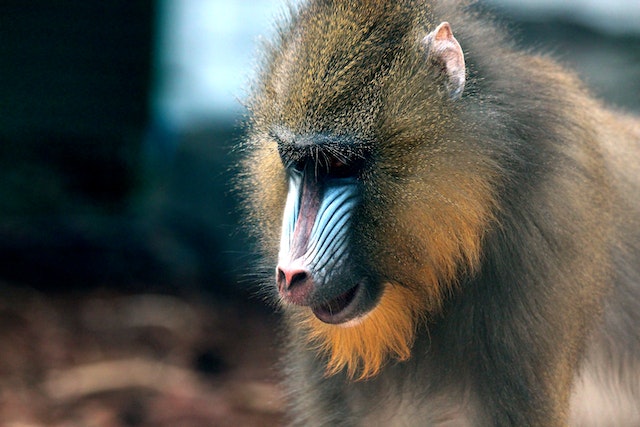In the wild tapestry of our world’s fauna, few creatures capture our imagination and hearts as instantly as monkeys. With their playful demeanor, social nature, and undeniable intelligence, monkeys share a special bond with humans. However, we often overlook the fact that ‘monkey’ is a blanket term for a diverse array of species. Let’s dive into the fascinating world of monkeys and discover ten species that you probably didn’t know about.
1. Pygmy Marmoset (Cebuella pygmaea)

As you can see, this tiny monkey has got a banana! In the tree canopies of South America’s rainforest, you’ll find the world’s smallest monkey, the Pygmy Marmoset. Weighing just around 100 grams and measuring up to 6 inches, these adorable creatures are known for their distinctive chirping communication and their love for tree sap.
2. Mandrill (Mandrillus sphinx)

The Mandrill is renowned as the world’s most colourful primate. These monkeys, native to rainforests of equatorial Africa, are recognised for their rainbow-hued faces and astonishingly bright buttocks.
3. Proboscis Monkey (Nasalis larvatus)
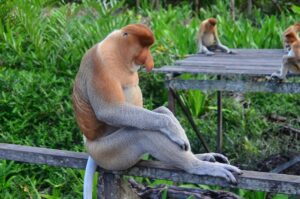
Known for their large, pendulous noses, Proboscis Monkeys are an iconic species native to Borneo’s mangrove forests. This distinctive feature is more pronounced in males and is thought to be a desirable trait among female monkeys.
4. Golden Lion Tamarin (Leontopithecus rosalia)
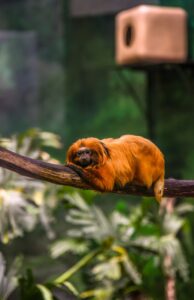
Donning a fiery, golden mane reminiscent of a lion’s, the Golden Lion Tamarin is a sight to behold. These beautiful and endangered monkeys live in Brazil’s Atlantic coastal rainforests and are known for their cooperative breeding behaviour.
5. Gelada (Theropithecus gelada)
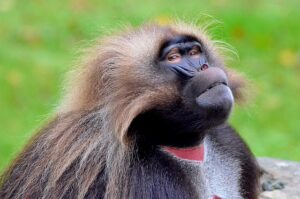
Geladas, also known as “bleeding-heart monkeys” due to the unique patch of bare skin on their chests, reside in the high mountain grasslands of Ethiopia. They are the last living species of a once widespread group of grass-eating primates.
6. Japanese Macaque (Macaca fuscata)
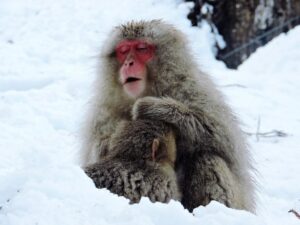
Often called ‘snow monkeys’, Japanese Macaques are world-famous for their winter hot-spring soaks in Jigokudani Monkey Park. They are the world’s most northern-living non-human primates.
7. Spider Monkey (Ateles)

Spider Monkeys, named for their long limbs and prehensile tails, are agile climbers of Central and South American forests. Their tail acts like a fifth limb, providing a great grip while swinging through the treetops.
8. Gray Langur (Semnopithecus)
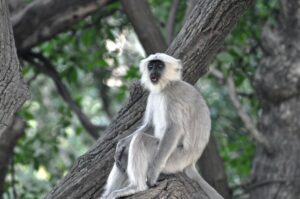
Gray Langurs, or Hanuman Langurs, are widely distributed across the Indian subcontinent. These monkeys are often considered sacred and protected around temples and cultural landmarks due to their association with the Hindu deity Hanuman.
9. Capuchin Monkey (Cebus)
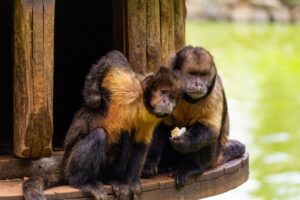
Known for their superior intellect and manual dexterity, Capuchin monkeys are native to Central and South America. They use tools with remarkable skill and are the species most often trained as service animals.
10. Vervet Monkey (Chlorocebus pygerythrus)

Vervet Monkeys are widely distributed across Africa and notable for their interesting societal structure. These monkeys exhibit unique behaviour like ‘alarm calls’ to warn fellow group members of potential threats.
This list merely scratches the surface of the diverse world of monkeys. Each species carries its unique behaviours, adaptations, and challenges, painting a vibrant picture of life’s diversity. As we navigate our shared planet, it’s essential to learn about and appreciate these amazing creatures. Recognizing their fascinating diversity is a first step in understanding our role in preserving their habitats and protecting them from threats such as deforestation and climate change.
Monkeys, being an integral part of the ecosystem, play crucial roles in seed dispersal and controlling pest populations. Unfortunately, many of these species are facing threats of extinction due to human activities. While some like the Golden Lion Tamarin are critically endangered, others like the Proboscis Monkey are endangered, as classified by the International Union for Conservation of Nature (IUCN).
We can contribute to their conservation in numerous ways. It could be as simple as educating others about these species or supporting organisations dedicated to protecting them. If you’re traveling, respect local guidelines on interacting with wildlife and choose eco-friendly options whenever possible.
Just like the incredible monkeys we’ve highlighted, every species on our planet has a role to play in the grand web of life. It’s upon us to ensure that future generations get to enjoy the same rich biodiversity that we do today.
The fascinating world of monkeys serves as a reminder of the wonders of nature, beckoning us to explore, respect, and protect. So next time you see a monkey, remember – there’s more to our primate cousins than meets the eye. Happy exploring!

